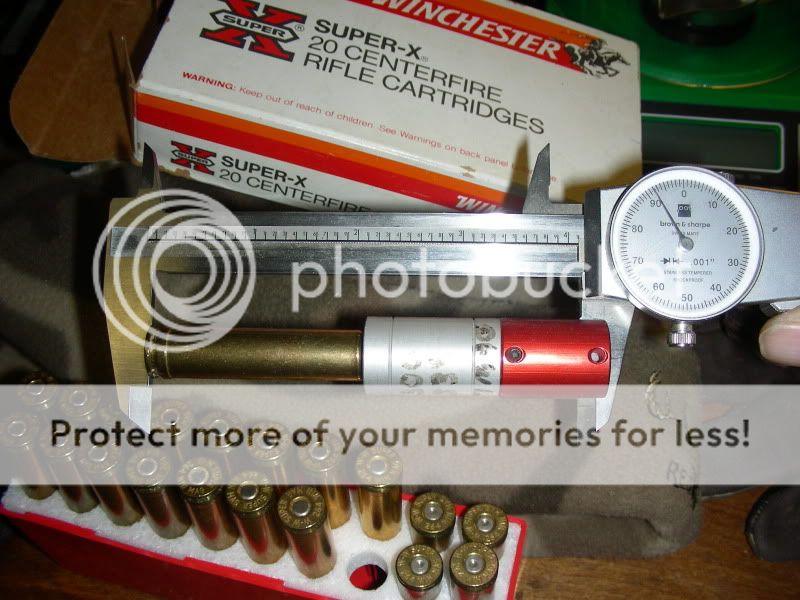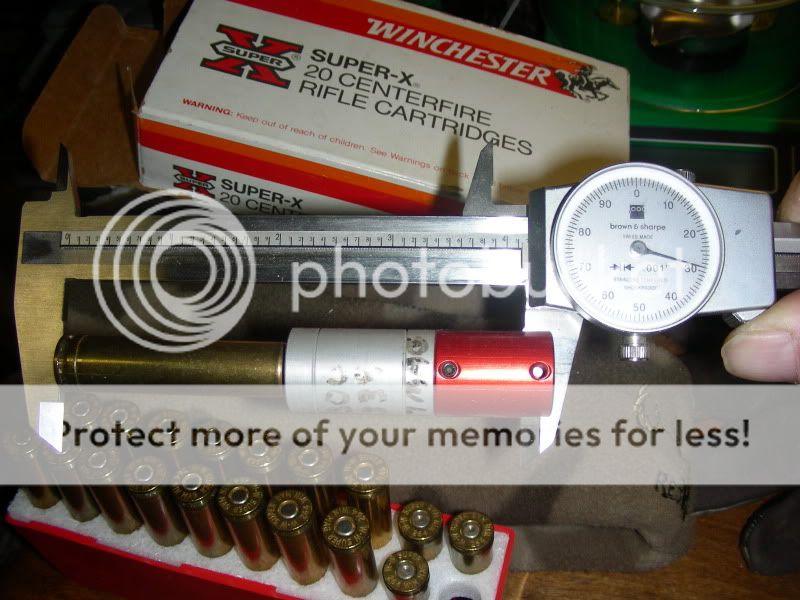I have now (1) read, (I think) most of what is available on the Web about this subject, (2) devoured the user guide, and (3) called RCBS and talked with a Tech about use of the instrument for determining head space. So I now understand the process (I think) pretty well--in theory. However, I would like to keep my rifle, not to mention my skull, intact, so I am going to post my findings--as well as what I think I have learned from those findings--for a little hand-holding on yall's part:
(1) I was concerned with the statement in the instructions to the effect that the Mic should not be used with cases that are to be either full-length or small-based resized. The RCBS Tech confirmed my assumption that this only applied to the use of the tool for bullet seating--and not the function of headspacing. So, I'm OK in using in my bolt guns.
(2) Next, I measured five rounds each of all my various batches of brass and loaded rounds, and have to admit I was somewhat blown away by the results:
(a) .300 Ultra Mag: I do not yet have any rounds fired in my rifle. I do have 100 virgin cases which have been processed only to the extent of primer pockets and flash holes as well as running an arbor through the necks: Results of measuring these cases revealed readings of -.001 (from zero) through -.003, mostly averaging around -.003.
Also, in order to get some factory ammo, I went online, mortgaged my house, and purchased 20 rounds of Nosler Custom ammo--wondering all the while what my Grandfather, born one month before Custer bought the farm at the Little Big Horn, would think of my paying what he shelled out for one acre of Texas ranch land--for a box of ammo! These beautiful rounds (and they ought to be!) measured consistently at -.005.
None of these measurements stood out particularly wildly.
(b) .300 Winchester Mag: Here, the results were mind-boggling, and I would like your impressions:
(Cases fired in my rifle): 10 cases, five of them Remington and five, Federal Premium Nickel) all came out anywhere from dead zero to +.002. This tells me that my chamber, as far as head space is concerned, is pretty much dead on with SAAMI Minimum specs.
Virgin Remington Brass: Five cases averaged -.013.
Factory Ammo:
First, Federal Premium Nickel: Five cases averaged -.018. Spread was -.018
through -.020.
Second, Remington: Five cases averaged -.015.
Third: Hornady: Five cases averaged -.010.
Question: Are these results amazing, or am I way off base?
Question: Finally, would I be way off base, given the approximation of my chamber headspace in the .300 Winchester of about + .001, to bump my shoulders back to approximately - .002?
Thanks,
Dinky
(1) I was concerned with the statement in the instructions to the effect that the Mic should not be used with cases that are to be either full-length or small-based resized. The RCBS Tech confirmed my assumption that this only applied to the use of the tool for bullet seating--and not the function of headspacing. So, I'm OK in using in my bolt guns.
(2) Next, I measured five rounds each of all my various batches of brass and loaded rounds, and have to admit I was somewhat blown away by the results:
(a) .300 Ultra Mag: I do not yet have any rounds fired in my rifle. I do have 100 virgin cases which have been processed only to the extent of primer pockets and flash holes as well as running an arbor through the necks: Results of measuring these cases revealed readings of -.001 (from zero) through -.003, mostly averaging around -.003.
Also, in order to get some factory ammo, I went online, mortgaged my house, and purchased 20 rounds of Nosler Custom ammo--wondering all the while what my Grandfather, born one month before Custer bought the farm at the Little Big Horn, would think of my paying what he shelled out for one acre of Texas ranch land--for a box of ammo! These beautiful rounds (and they ought to be!) measured consistently at -.005.
None of these measurements stood out particularly wildly.
(b) .300 Winchester Mag: Here, the results were mind-boggling, and I would like your impressions:
(Cases fired in my rifle): 10 cases, five of them Remington and five, Federal Premium Nickel) all came out anywhere from dead zero to +.002. This tells me that my chamber, as far as head space is concerned, is pretty much dead on with SAAMI Minimum specs.
Virgin Remington Brass: Five cases averaged -.013.
Factory Ammo:
First, Federal Premium Nickel: Five cases averaged -.018. Spread was -.018
through -.020.
Second, Remington: Five cases averaged -.015.
Third: Hornady: Five cases averaged -.010.
Question: Are these results amazing, or am I way off base?
Question: Finally, would I be way off base, given the approximation of my chamber headspace in the .300 Winchester of about + .001, to bump my shoulders back to approximately - .002?
Thanks,
Dinky


